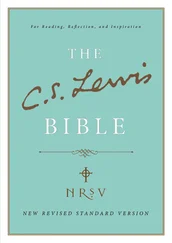Standard Template Library Programmer's Guide
Здесь есть возможность читать онлайн «Standard Template Library Programmer's Guide» весь текст электронной книги совершенно бесплатно (целиком полную версию без сокращений). В некоторых случаях можно слушать аудио, скачать через торрент в формате fb2 и присутствует краткое содержание. Жанр: Программирование, Справочники, на английском языке. Описание произведения, (предисловие) а так же отзывы посетителей доступны на портале библиотеки ЛибКат.
- Название:Standard Template Library Programmer's Guide
- Автор:
- Жанр:
- Год:неизвестен
- ISBN:нет данных
- Рейтинг книги:4 / 5. Голосов: 1
-
Избранное:Добавить в избранное
- Отзывы:
-
Ваша оценка:
- 80
- 1
- 2
- 3
- 4
- 5
Standard Template Library Programmer's Guide: краткое содержание, описание и аннотация
Предлагаем к чтению аннотацию, описание, краткое содержание или предисловие (зависит от того, что написал сам автор книги «Standard Template Library Programmer's Guide»). Если вы не нашли необходимую информацию о книге — напишите в комментариях, мы постараемся отыскать её.
Standard Template Library Programmer's Guide — читать онлайн бесплатно полную книгу (весь текст) целиком
Ниже представлен текст книги, разбитый по страницам. Система сохранения места последней прочитанной страницы, позволяет с удобством читать онлайн бесплатно книгу «Standard Template Library Programmer's Guide», без необходимости каждый раз заново искать на чём Вы остановились. Поставьте закладку, и сможете в любой момент перейти на страницу, на которой закончили чтение.
Интервал:
Закладка:
[2] This restriction is the only reason for queue to exist at all. Any container that is both a front insertion sequence and a back insertion sequence can be used as a queue; deque , for example, has member functions front , back , push_front , push_back , pop_front , and pop_back The only reason to use the container adaptor queue instead of the container deque is to make it clear that you are performing only queue operations, and no other operations.
[3] One might wonder why pop() returns void , instead of value_type . That is, why must one use front() and pop() to examine and remove the element at the front of the queue , instead of combining the two in a single member function? In fact, there is a good reason for this design. If pop() returned the front element, it would have to return by value rather than by reference: return by reference would create a dangling pointer. Return by value, however, is inefficient: it involves at least one redundant copy constructor call. Since it is impossible for pop() to return a value in such a way as to be both efficient and correct, it is more sensible for it to return no value at all and to require clients to use front() to inspect the value at the front of the queue .
stack , priority_queue , deque , Container, Sequence
priority_queue
Categories: containers, adaptors
Component type: type
A priority_queue is an adaptor that provides a restricted subset of Container functionality: it provides insertion of elements, and inspection and removal of the top element. It is guaranteed that the top element is the largest element in the priority_queue , where the function object Compare is used for comparisons. [1] Priority_queue does not allow iteration through its elements. [2]
Priority_queue is a container adaptor, meaning that it is implemented on top of some underlying container type. By default that underlying type is vector , but a different type may be selected explicitly.
int main() {
priority_queue Q;
Q.push(1);
Q.push(4);
Q.push(2);
Q.push(8);
Q.push(5);
Q.push(7);
assert(Q.size() == 6);
assert(Q.top() == 8);
Q.pop();
assert(Q.top() == 7);
Q.pop();
assert(Q.top() == 5);
Q.pop();
assert(Q.top() == 4);
Q.pop();
assert(Q.top() == 2);
Q.pop();
assert(Q.top() == 1);
Q.pop();
assert(Q.empty());
}
Defined in the standard header queue, and in the nonstandard backward-compatibility header stack.h.
| Parameter | Description | Default |
|---|---|---|
T |
The type of object stored in the priority queue. | |
Sequence |
The type of the underlying container used to implement the priority queue. | vector |
Compare |
The comparison function used to determine whether one element is smaller than another element. If Compare(x,y) is true , then x is smaller than y . The element returned by Q.top() is the largest element in the priority queue. That is, it has the property that, for every other element x in the priority queue, Compare(Q.top(), x) is false . | less |
Assignable, Default Constructible
• T is a model of Assignable.
• Sequence is a model of Sequence.
• Sequence is a model of Random Access Container.
• Sequence::value_type is the same type as T .
• Compare is a model of Binary Predicate.
• Compare induces a strict weak ordering, as defined in the LessThan Comparable requirements, on its argument type.
• T is convertible to Compare 's argument type.
None.
| Member | Where defined | Description |
|---|---|---|
value_type |
priority_queue |
See below. |
size_type |
priority_queue |
See below. |
priority_queue() |
Default Constructible | The default constructor. Creates an empty priority_queue , using Compare() as the comparison function. |
priority_queue(const priority_queue&) |
Assignable | The copy constructor. |
priority_queue(const Compare&) |
priority_queue |
See below. |
priority_queue(const value_type*, const value_type*) |
priority_queue |
See below. |
priority_queue(const value_type*, const value_type*, const Compare&) |
priority_queue |
See below. |
priority_queue& operator=(const priority_queue&) |
Assignable | The assignment operator. |
bool empty() const |
priority_queue |
See below. |
size_type size() const |
priority_queue |
See below. |
const value_type& top() const |
priority_queue |
See below. |
void push(const value_type&) |
priority_queue |
See below. |
void pop()[3] |
priority_queue |
See below. |
These members are not defined in the Assignable and Default Constructible requirements, but are specific to priority_queue .
| Member | Description |
|---|---|
value_type |
The type of object stored in the priority_queue . This is the same as T and Sequence::value_type . |
size_type |
An unsigned integral type. This is the same as Sequence::size_type . |
priority_queue(const Compare& comp) |
The constructor. Creates an empty priority_queue , using comp as the comparison function. The default constructor uses Compare() as the comparison function. |
priority_queue(const value_type* first, const value_type* last) |
The constructor. Creates a priority_queue initialized to contain the elements in the range [first, last) , and using Compare() as the comparison function. |
priority_queue(const value_type* first, const value_type* last, const Compare& comp) |
The constructor. Creates a priority_queue initialized to contain the elements in the range [first, last) , and using comp as the comparison function. |
bool empty() const |
Returns true if the priority_queue contains no elements, and false otherwise. S.empty() is equivalent to S.size() == 0 . |
size_type size() const |
Returns the number of elements contained in the priority_queue . |
const value_type& top() const |
Returns a const reference to the element at the top of the priority_queue. The element at the top is guaranteed to be the largest element in the priority queue, as determined by the comparison function Compare . That is, for every other element x in the priority_queue , Compare(Q.top(), x) is false . Precondition: empty() is false . |
void push(const value_type& x) |
Inserts x into the priority_queue. Postcondition: size() will be incremented by 1 . |
void pop() |
Removes the element at the top of the priority_queue, that is, the largest element in the priority_queue. [3] Precondition: empty() is false . Postcondition: size() will be decremented by 1 . |
[1] Priority queues are a standard concept, and can be implemented in many different ways; this implementation uses heaps. Priority queues are discussed in all algorithm books; see, for example, section 5.2.3 of Knuth. (D. E. Knuth, The Art of Computer Programming. Volume 3: Sorting and Searching . Addison-Wesley, 1975.)
Читать дальшеИнтервал:
Закладка:
Похожие книги на «Standard Template Library Programmer's Guide»
Представляем Вашему вниманию похожие книги на «Standard Template Library Programmer's Guide» списком для выбора. Мы отобрали схожую по названию и смыслу литературу в надежде предоставить читателям больше вариантов отыскать новые, интересные, ещё непрочитанные произведения.
Обсуждение, отзывы о книге «Standard Template Library Programmer's Guide» и просто собственные мнения читателей. Оставьте ваши комментарии, напишите, что Вы думаете о произведении, его смысле или главных героях. Укажите что конкретно понравилось, а что нет, и почему Вы так считаете.











